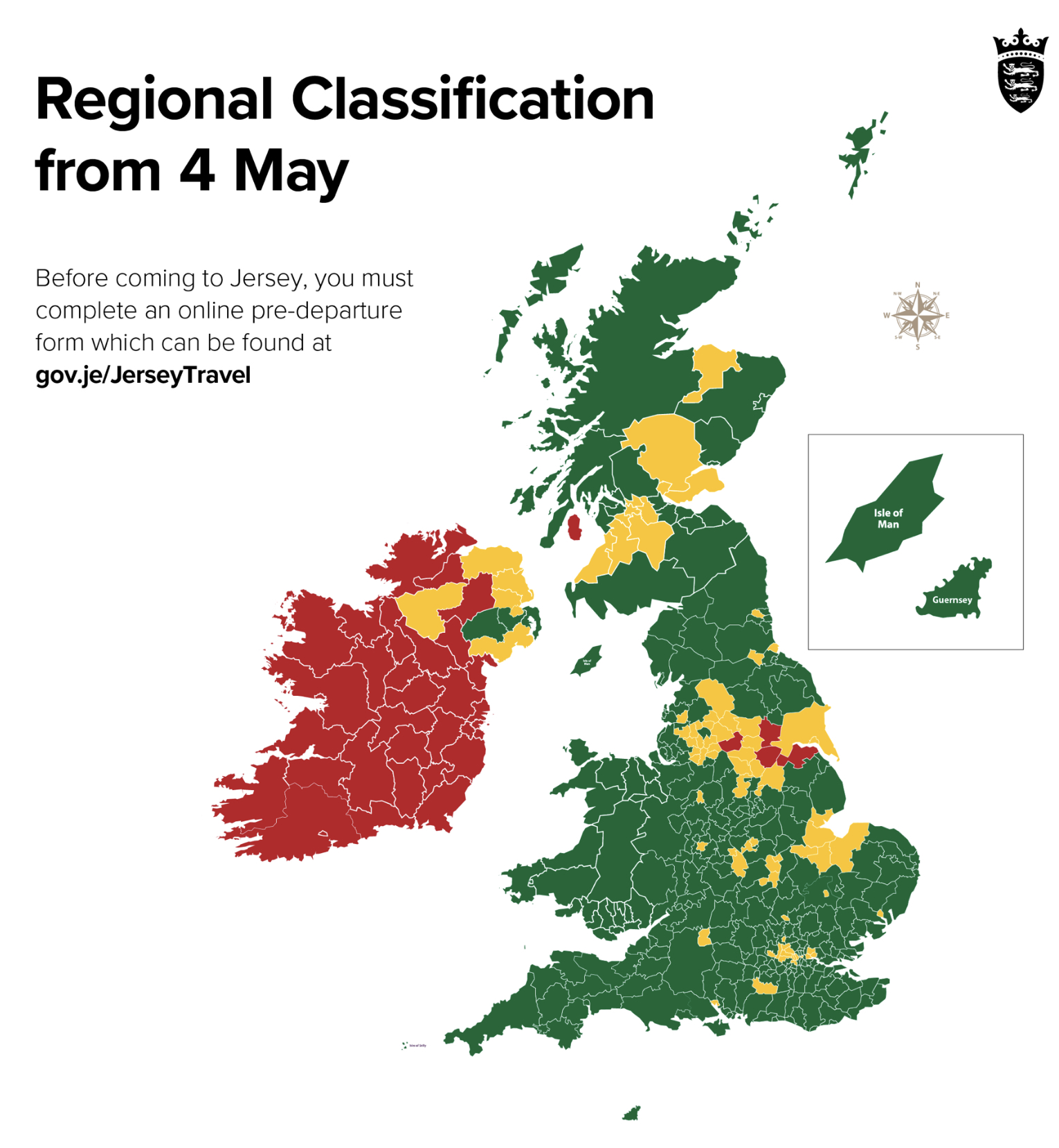


An Islander wanting to travel home has called the traffic light approach “confusing and misleading” after he was caught out by disparities between the Jersey and UK systems.
Retired businessman Tony Able was confident that he would not have to isolate beyond his first negative test result, because where he has been based in west London has averaged fewer than seven positive Covid cases over the past 14 days.
The UK bases its colour-coding on the number of cases per 100,000 over the past seven days; for Jersey, it is over 14 days.
Mr Able kept a close eye on the gov.uk website, which consistently showed the borough – Hammersmith and Fulham – as ‘green’ and his actual postcode as ‘white’, meaning it has fewer than three cases.
However, under Jersey’s methodology, the area is ‘amber’, meaning that Mr Able will have to isolate until a Day 5 negative test when he returns this weekend.

Pictured: The latest regional classification map, issued by Jersey on Thursday, which comes into force on Tuesday.
Mr Able has been in London for two weeks and is returning to Jersey this weekend.
“Of course, you could argue that I should have researched more or maybe waited until the new traffic light system was in place before booking my flights but, I have to say, it is very misleading for people,” he said.
“I fear that tourists coming to Jersey will be especially confused as they may well look to the UK Government website for guidance, as I did.
“There is one Common Travel Area but two different criteria – that just doesn’t make sense to me.”
Mr Able was left even more confused when he was told by the Jersey Coronavirus Helpdesk that he could double the UK seven-day cases-per-100,000 figure to estimate the 14-day figure.
“The UK data states that the seven day rate for your area is 35.1 per 100,000 people [...] so a rough 14 day for your area would be 70.2 per 100,000, putting your area into amber on our ratings system,” he was informed.
Since then, the Government has confirmed that it does not double UK seven-day figures to reach its own 14-day calculations.
Instead, the 14-day rate is calculated by adding the number of daily cases in an area in the past 14 days and dividing this number by the total population that live there. This is then multiplied by 100,000 to allow comparisons between areas of different sizes. 14 day rates are not comparable to 7 day rates, it says.

Pictured: The UK Government’s Covid map, which is based on a seven-day rolling rate of new cases per 100,000.
Under this calculation, Hammersmith and Fulham is just above 50 cases, putting it in the amber category.
“I understand the methodology now but it took me a while and I will be isolating when I return on Sunday,” said Mr Able. “However, I fear many more people will be caught out by the differing approaches taken by the UK and Jersey, especially when international travel resumes on 17 May.”
The Government has been asked for a response - ministers have previously said that the Island is taking a cautious approach in order to assess how travel impacts on active cases and any ongoing transmission in Jersey.
Comments
Comments on this story express the views of the commentator only, not Bailiwick Publishing. We are unable to guarantee the accuracy of any of those comments.